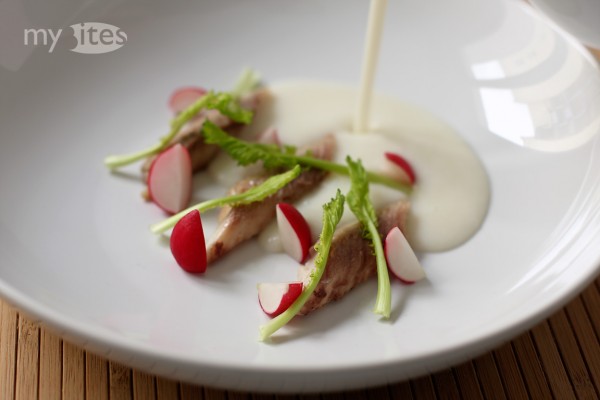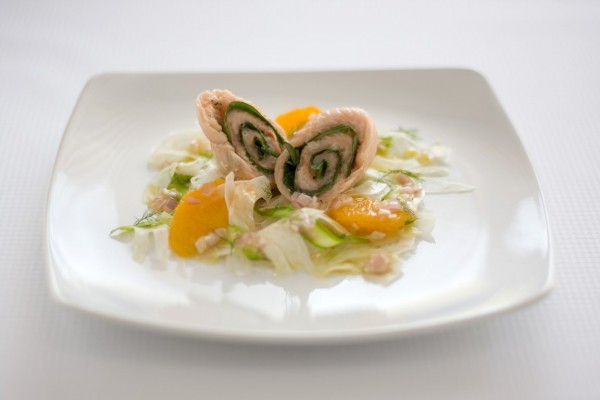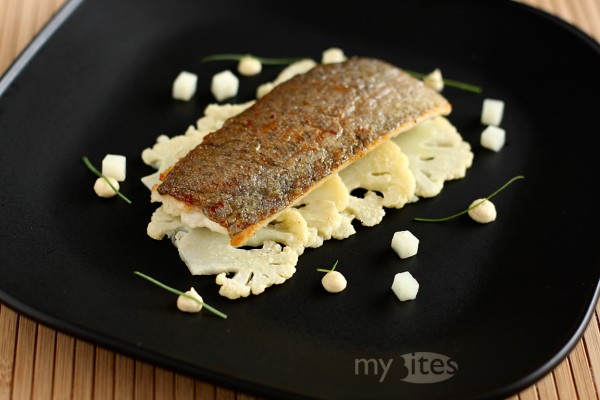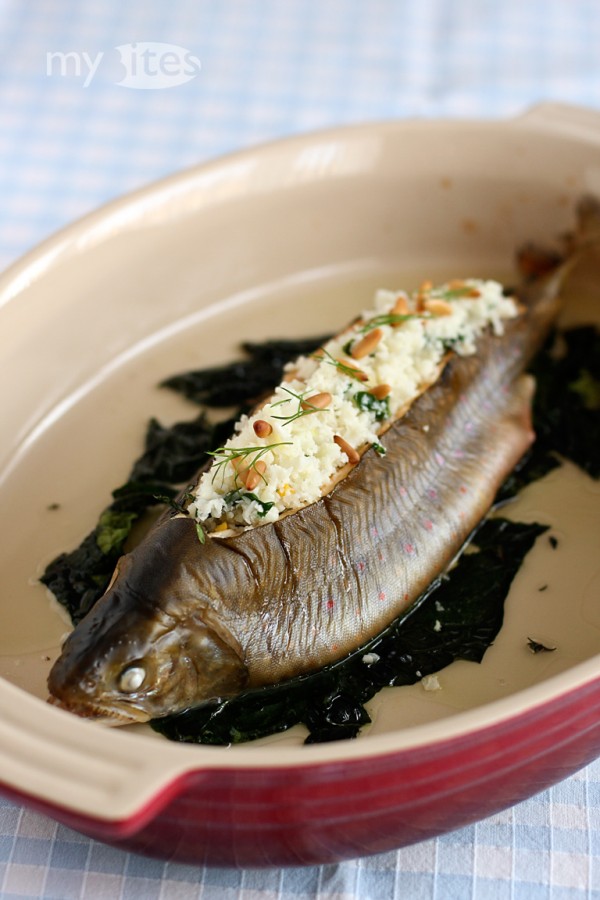My blog’s winter sleep turned out to be a little bit longer than expected. The reason for the silence is that first I moved partially to Frankfurt for 3 months and then after more than 10 years in Erlangen I finally moved to Germany’s most colourful and versatile gastronomic city: Berlin. Looking for a new apartment, packing and moving all my stuff, saying goodbye to friends and equipping my new home with furniture devoured several weekends. In the end, everything went very well. From the cooking perspective, the most important change is that I replaced my tiny 3m² kitchen with a huge 12m² one. So finally I have the space for all my equipment right in the kitchen and don’t need to hide cooking utensils under my sofa or bed. Though, the kitchen is still not ready completely since I’m working on a kitchen island, but at least it is operational. As an inauguration I prepared a fresh and simple dish – in the hope that spring might come in a few days.
Tag Archives: fish
Basil-Trout Roll with Orange-Fennel-Asparagus Salad
During summer the youth division on3 of the Bavarian Television (BR) is touring across Bavaria and broadcasts each week from a different city. Last week their tour bus stopped in Erlangen, the town I live in. Fortunately, the program directors decided to talk about foodblogging and invited 3 local foodbloggers from the surrounding area: Kathi (Kochfrosch), Sylvia (Rock the Kitchen) and me. It was nice to meet Kathi and Sylvia, since until recently I didn’t even know that there were other foodbloggers so close nearby. We were asked some questions about foodblogging and in the second part of the show we had to prepare some “food porn” using a few provided ingredients. The show was recorded on last Wednesday and aired both on the BR-alpha and BR channels. If you missed the show: it is available online at the on3 website.
Before the live show, Kathi, Sylvia and I were asked by the tv crew to join a skype meeting, where we helped one of the shows hosts prepare and cook a menu for his guests. The whole dinner was filmed and the resulting short film screened during the live show. I had to provide a recipe for the main course, so because I knew the show would air sometime in July, I planned a refreshing summer dish. The guests seemed pretty amazed, so hopefully others might would want to prepare this dish as well. Because I started myBites in last August, the recipe for the basil-trout rolls was featured on my (long-running) Hungarian foodblog only. Since now it’s exactly the right season for this dish (and due to the recently aired show on BR) I decided to share the recipe in English, too.
Salmon and Kohlrabi
Baking in salt-crust is a technique usually applied to fish, meat, potatoes, beets and sometimes celery roots. In fact, a lot more vegetables can be covered in coarse sea salt and baked in the oven, where the salt-crust not only seasons the vegetable, but also keeps all the flavors inside. This time I experimented with salt-baked kohlrabi, which developed into a magnificent result.
Trout with Cauliflower and White Poppy Seed and Lemon Puree
Cauliflower is a vegetable that can be stored quite well, and therefore it is available throughout almost the whole year. Actually, the real season for cauliflower – at least in Europe – is about right now. During spring and summer fresh cauliflower can be sourced from local farmers in white, green, orange or purple colors. Usually, cauliflower is picked into florets and cooked or steamed tender, or it is sometimes prepared as a creamy soup. In this recipe I cooked the cauliflower slightly different than usual and served it with a crispy roasted trout fillet.
Coconut Trout Confit with Beetroot Fondant
It’s almost 4 years now that I filleted a whole fish for the first time in my life. Since then I stopped counting the number of fish I’ve filleted and really gained routine in getting clean and beautiful cuts as result. Nowadays I prefer to buy whole fish at the local market, because this way I can use the bones, head, tail and fins as well to cook a flavorful fish stock, which really enhances sauces, risottos and soups. I prefer to buy local and traditional fish such as trout, char or carp. Sea fish are no options for me, because I don’t have any reliable source for buying fresh seafood, and my hometown Erlangen is simply too far away from the sea.
Regarding the connection between seafood consumption and the distance to the sea, I had a surprising experience a few years ago in Italy, which I like to bring up every time I’m asked about seafood. I was lucky to get a publication accepted at a major conference in computer science, which was held in the beautiful city of Florence. Of course, I used the lunch breaks and the evenings to explore the local restaurant scene. I was even more fortunate having a receptionist at my hotel who was actually a native Florentine citizen. As almost everybody in Italy, he loved to eat, and especially to eat well. So from the first day on I consulted him which restaurant he recommends me to visit. I wasn’t a regular tourist, I really wanted to get to know the real local cuisine. He always told me only the next location I should go to and based on my report the next day he recommended me the next place to visit. This tactic was quite comprehensible, because I could have been a usual tourist, who actually might have been afraid of tripe, wild boar or other local specialties. But he pretty soon learned, that I was after the real local cuisine.
Char with Cauliflower Couscous
Have you ever wondered why fish in Germany – and almost everywhere in Europe – is gutted with a cut at its belly? It’s straightforward to some extent, because all innards are located in the belly, and by removing them along with the gills, the fish can be kept refrigerated 3-4 days longer. In China I noticed that fish are usually kept alive in restaurants and killed to order. An even more interesting experience was to see that all fish was cut open and gutted from its back, so the bellies of the fish were always completely intact. I liked this back filleting method simply because the possibilities of stuffing and serving a whole fish. Unfortunately, at the local market in Erlangen they don’t sell any fish alive and all of them are already gutted via a cut along their bellies. So my filleting from the back basically resulted in two fillets held together by the head and the tail of the fish, but made the seasoning of the whole fish a lot simpler and more precise.




